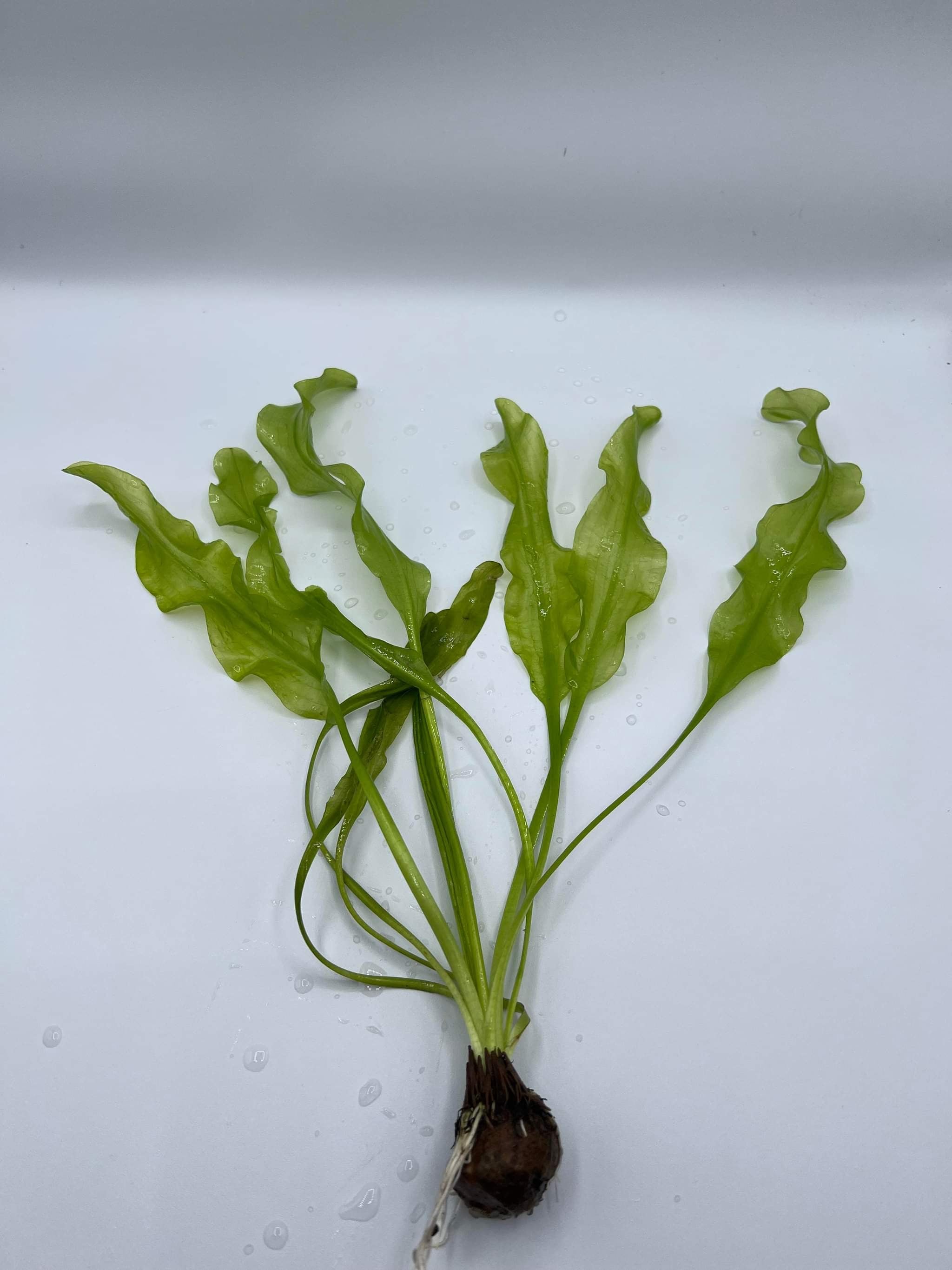Aponogeton ulvaceus - Large
1 plant.
Aponogeton ulvaceus, commonly known as the Laceleaf or Compact Aponogeton, is a beautiful aquatic plant with finely textured leaves. Here are the care requirements to help you cultivate Aponogeton ulvaceus successfully in your aquarium:
**1. Lighting:**
- Provide moderate to high-intensity lighting for optimal growth. Aponogeton ulvaceus benefits from sufficient light levels, and higher intensity can promote more compact and lush growth.
**2. Substrate:**
- Plant the bulb in a nutrient-rich substrate. Aponogeton ulvaceus extracts nutrients from the substrate through its roots, and a nutrient-rich substrate supports healthy growth.
**3. Fertilization:**
- Use a comprehensive liquid fertilizer to supplement essential nutrients regularly. Aponogeton ulvaceus can benefit from additional nutrients in the water column.
**4. CO2 Injection:**
- While not strictly necessary, providing a source of CO2 can enhance growth and overall health, especially in high-tech aquarium setups. However, Aponogeton ulvaceus can thrive without supplemental CO2.
**5. Temperature:**
- Maintain a temperature range of 72-82°F (22-28°C). Aponogeton ulvaceus can adapt to a variety of temperatures within this range.
**6. Water Parameters:**
- pH: 6.5-7.5
- Hardness: Soft to moderately hard water is suitable.
- Keep water parameters stable, as sudden changes can stress the plant.
**7. Pruning:**
- Pruning is generally minimal for Aponogeton ulvaceus. Remove any yellow or decaying leaves to encourage new growth and maintain a tidy appearance.
**8. Placement:**
- Plant Aponogeton ulvaceus in the background of the aquarium. Its tall and finely textured leaves make it a suitable choice for the rear sections of the tank.
**9. Water Flow:**
- Provide gentle water circulation. Aponogeton ulvaceus does not require strong water flow, and a gentle current is usually sufficient.
**10. Dormancy Period:**
- Aponogeton species, including Aponogeton ulvaceus, may go through a dormancy period where the plant sheds its leaves. This is a natural phase, and the bulb will often sprout new leaves after a rest period.
**11. Tank Mates:**
- Choose tank mates that are compatible and won't disturb the plant. Aponogeton ulvaceus is generally not a target for herbivorous fish.
**12. Observation:**
- Regularly observe the plant for any signs of nutrient deficiencies, pests, or diseases.
- Monitor its growth and adjust care routines based on the specific conditions of your aquarium.
By providing the right conditions, including proper lighting, substrate, and nutrient supplementation, you can enjoy the delicate beauty of Aponogeton ulvaceus in your aquarium.



